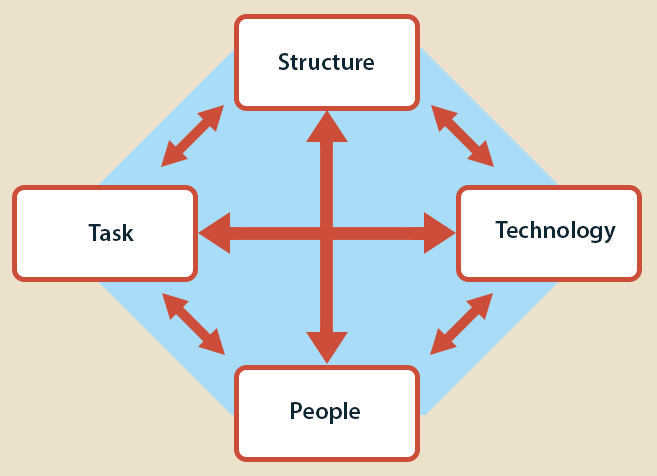Main Content
Lesson 4: Organization Diagnosis Model I
Organizational Diagnosis Model 2: Leavitt's Diamond Model (1965)
Compared to the force field analysis model, Leavitt's model specifies four important variables to assess within organizations rather than driving and hindering forces to the current state.
These variables include task, structure, technological, and human variables. They are further explained below:
- Task variables refer to activities that employees are expected to perform in order to deliver products and services.
- Structure variables refer to any structure (organizational chart, communication norm, work process, etc.) that employees are expected to follow within the organization.
- Technological variables refer to all tools, machines, and equipment that support employees' tasks.
- Human variables refer to the people who implement the tasks that are relevant to the organization's goals.
The arrows in the model indicate the nature of interdependence among the variables. For example, if a new task is defined, an organization must find a suitable person for the task and provide tools to carry out the task (technology). In some cases, introducing a significant technology may prompt the organization to adjust its workflow (structure).

- In the model itself, environmental factors, inputs, and outputs are not considered (unlike other open systems models).
- This model operates similar to the Nadler-Tushman congruence model, which you will learn about in the next lesson.
- When applying this model in organizational diagnosis, it is essential to examine changes in each element and their impact on other variables.
For an example of the use of Leavitt's model, see Vadi and Roots (2004).
Reference
Vadi, M., & Roots, H. (2004). The Estonian Organization—The Subjects of Transformation. Centre for the Study of Economic & Social Change Europe.
